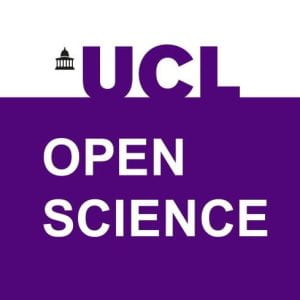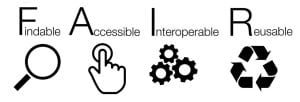How understanding copyright can help you as a researcher
By Rafael, on 4 April 2024
Guest post by Christine Daoutis, Copyright Support Officer
Welcome to the inaugural blog post of a collaborative series between the UCL Office for Open Science and Scholarship and the UCL Copyright team. In this series, we will explore important aspects of copyright and its implications for open research and scholarship.
Research ideas, projects, and their outcomes often involve using and producing materials that may be protected by copyright. Copyright protects a range of creative works, whether we are talking about a couple of notes in a notebook, a draft thesis chapter, the rough write-up of a data, a full monograph and the content of this very blog. While a basic knowledge of copyright is essential, particularly to stay within the law, there is much more to copyright than compliance. Understanding certain aspects of copyright can help you use copyright materials with more confidence, make use of your own rights and overall, enhance the openness of your research.

Image attribution: Patrick Hochstenbach, 2014. Available under https://creativecommons.org/licenses/by/4.0/
This first post in our series is dedicated to exploring common questions that arise during research projects. In future posts, we will explore some of these questions further, providing guidance, linking to new resources, and signposting relevant workshops. Copyright-related enquiries often arise in the following areas:
Reusing other people’s materials: How do you GET permission to reuse someone else’s images, figures, software, questionnaires, or research data? Do you always need permission? Is use for ‘non-commercial, research’ purposes always permitted, or are there other factors to consider? How do licenses work, and what can you do when a license does not cover your use? It’s easy to be overconfident when using others’ materials, for example, by assuming that images found on the internet can be reused without permission. It’s equally easy to be too cautious, ending up not making use of valuable resources for fear of infringing someone’s rights. Understanding permissions, licenses, and copyright exceptions – what may be within your rights to do as a user – can help you.
Disseminating your research throughout the research cycle: There are open access options for your publications and theses, supporting access to and often, reuse of your work. How do you license your work for reuse? What do the different licenses mean, and which one is most suitable? What about materials produced early on in your research: study preregistrations, research data, preprints? How can you make data FAIR through licensing? What do you need to consider when making software and other materials open source?
Is your work protected in the first place? Documents, images, video and other materials are usually protected by copyright. Facts are not. For a work to be protected it needs to be ‘original’. What does ‘original’ mean in this context? Are data protected by copyright? What other rights may apply to a work?
Who owns your research? We are raising questions about licensing and disseminating your research, but is it yours to license? What does the law say, and what is the default position for staff and students at UCL? How do contracts, including publisher copyright transfer agreements and data sharing agreements, affect how you can share your research?
‘Text and data mining’. Many research projects involve computational analysis of large amounts of data. This involves copying and processing materials protected by copyright, and often publishing the outcomes of this analysis. In which cases is this lawful? How do licences permit you to do, exactly, and what can you do under exceptions to copyright? How are your text and data mining activities limited if you are collaborating with others, across institutions and countries?
The use of AI. Speaking of accessing large amounts of data, what is the current situation on intellectual property and generative AI? What do you need to know about legal implications where use of AI is involved?
These questions are not here to overwhelm you but to highlight areas where we can offer you support, training, and opportunities for discussion. To know more:
- Follow future posts on this blog.
- Register for an upcoming copyright session. If you cannot make those dates, please contact copyright@ucl.ac.uk to arrange a bespoke session.
- Visit our training and resources page for more ideas and links to online tutorials.
- Have a head start: visit our guidance on copyright and publications, copyright and research data and look out for upcoming guidance on text and data mining.
Get involved!
 The UCL Office for Open Science and Scholarship invites you to contribute to the open science and scholarship movement. Stay connected for updates, events, and opportunities. Follow us on X, formerly Twitter, LinkedIn, and join our mailing list to be part of the conversation!
The UCL Office for Open Science and Scholarship invites you to contribute to the open science and scholarship movement. Stay connected for updates, events, and opportunities. Follow us on X, formerly Twitter, LinkedIn, and join our mailing list to be part of the conversation!
 Close
Close



